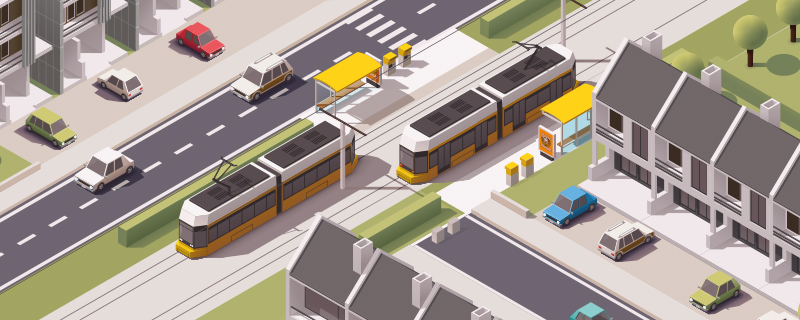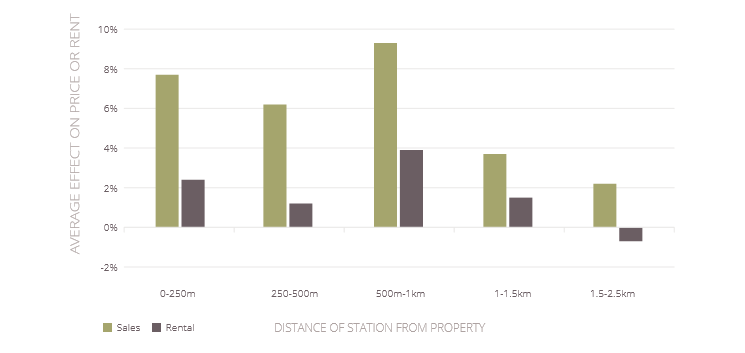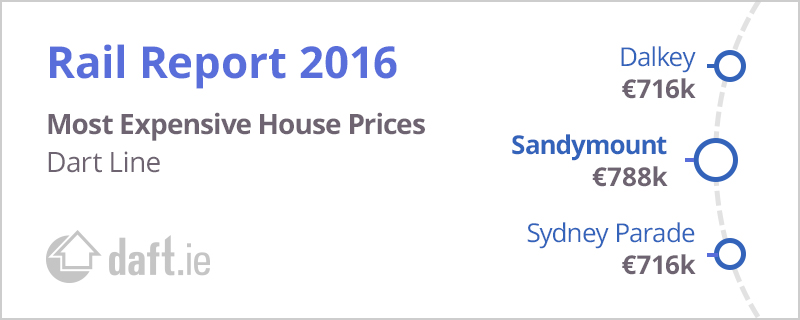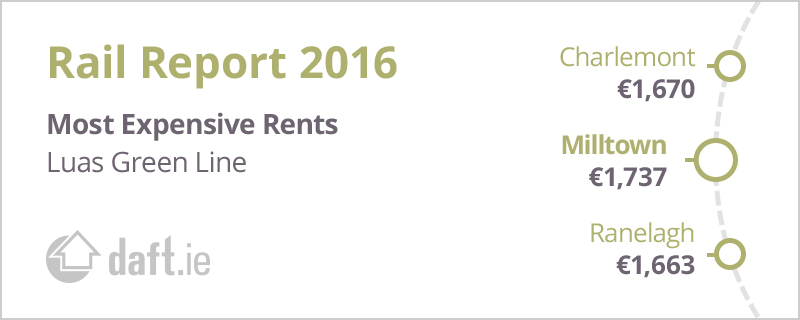The value of the train
Daft Reports
- Ronan Lyons (House Price, Q1 2024)
- Ronan Lyons (Rental Price, Q4 2023)
- Ronan Lyons (House Price, Q4 2023)
- Ronan Lyons (Rental Price, Q3 2023)
- Ronan Lyons (House Price, Q3 2023)
- Ronan Lyons (Rental Price, Q2 2023)
- Ronan Lyons (House Price, Q2 2023)
- Ronan Lyons (Rental Price, Q1 2023)
- Ronan Lyons (House Price, Q1 2023)
- Ronan Lyons (Rental Price, Q4 2022)
- Ronan Lyons (House Price, Q4 2022)
- Ronan Lyons (Rental Price, Q3 2022)
- Ronan Lyons (House Price, Q3 2022)
- Ronan Lyons (Rental Price, Q2 2022)
- Ronan Lyons (House Price, Q2 2022)
- Ronan Lyons (Rental Price, Q1 2022)
- Ronan Lyons (House Price, Q1 2022)
- Ronan Lyons (Rental, Q4 2021)
- Ronan Lyons (House Price, Q4 2021)
- Ronan Lyons (Rental, Q3 2021)
- Ronan Lyons (House Price, Q3 2021)
- Ronan Lyons (Rental, Q2 2021)
- Ronan Lyons (House Price, Q2 2021)
- Ronan Lyons (Rental, Q1 2021)
- Ronan Lyons (House Price, Q1 2021)
- Ronan Lyons (Rental, Q4 2020)
- Ronan Lyons (House Price, Q4 2020)
- Ronan Lyons (Wealth, H2 2020)
- Ronan Lyons (Rental, Q3 2020)
- Ronan Lyons (House Price, Q3 2020)
- Ronan Lyons (Housing, July 2020)
- Ronan Lyons (Housing, June 2020)
- Ronan Lyons (Housing, May 2020)
- Ronan Lyons (Rental, Q1 2020)
- Ronan Lyons (House Price, Q1 2020)
- Ronan Lyons (Rental, Q4 2019)
- Ronan Lyons (House Price, Q4 2019)
- Ronan Lyons (Wealth, H2 2019)
- Ronan Lyons (Rental, Q3 2019)
- Ronan Lyons (House Price, Q3 2019)
- Pierre Yimbog (Rental, Q2 2019)
- Ronan Lyons (House Price, Q2 2019)
- Ronan Lyons (Wealth, H1 2019)
- Ronan Lyons (Rental, Q1 2019)
- Ronan Lyons (House Price, Q1 2019)
- Ronan Lyons (Rental, Q4 2018)
- Ronan Lyons (House Price, Q4 2018)
- Ronan Lyons (Wealth, H2 2018)
- Ronan Lyons (Rental, Q3 2018)
- Ronan Lyons (House Price, Q3 2018)
- Shane De Rís (Rental, Q2 2018)
- Ronan Lyons (House Price, Q2 2018)
- Ronan Lyons (Wealth, 2018)
- Ronan Lyons (Rental, Q1 2018)
- Ronan Lyons (House Price, Q1 2018)
- Ronan Lyons (Rental, Q4 2017)
- Ronan Lyons (House Price, Q4 2017)
- Ronan Lyons (Rental, Q3 2017)
- Ronan Lyons (House Price, Q3 2017)
- Katie Ascough (Rental, Q2 2017)
- Ronan Lyons (Wealth, 2017)
- Ronan Lyons (House Price, Q2 2017)
- Ronan Lyons (Rental, Q1 2017)
- Ronan Lyons (House Price, Q1 2017)
- Ronan Lyons (Rental, Q4 2016)
- Ronan Lyons (House Price, Q4 2016)
- Ronan Lyons (Rental, Q3 2016)
- Ronan Lyons (House Price, Q3 2016)
- Ronan Lyons (School Report, 2016)
- Conor Viscardi (Rental, Q2 2016)
- Ronan Lyons (Rail Report, 2016)
- Ronan Lyons (House Price, Q2 2016)
- Ronan Lyons (Rental, Q1 2016)
- Ronan Lyons (House Price, Q1 2016)
- Ronan Lyons (Rental, Q4 2015)
- Ronan Lyons (House Price, Q4 2015)
- Ronan Lyons (Rental, Q3 2015)
- Ronan Lyons (House Price, Q3 2015)
- Marcus O'Halloran (Rental, Q2 2015)
- Ronan Lyons (House Price, Q2 2015)
- Ronan Lyons (Rental, Q1 2015)
- Ronan Lyons (House Price, Q1 2015)
- Ronan Lyons (Rental, Q4 2014)
- Ronan Lyons (House Price, Q4 2014)
- Ronan Lyons (Rental, Q3 2014)
- Ronan Lyons (House Price, Q3 2014)
- Domhnall McGlacken-Byrne (Rental, Q2 2014)
- Ronan Lyons (House Price, Q2 2014)
- Ronan Lyons (Rental, Q1 2014)
- Ronan Lyons (House Price, Q1 2014)
- Ronan Lyons (Rental, Q4 2013)
- Ronan Lyons (House Price, Q4 2013)
- Ronan Lyons (Rental, Q3 2013)
- Ronan Lyons (House Price, Q3 2013)
- Ronan Lyons (Rental, Q2 2013)
- Ronan Lyons (House Price, Q2 2013)
- Ronan Lyons (Rental, Q1 2013)
- Ronan Lyons (House Price, Q1 2013)
- Ronan Lyons (Rental, Q4 2012)
- Ronan Lyons (House Price, Q4 2012)
- Lorcan Sirr (Rental, Q3 2012)
- Padraic Kenna (House Price, Q3 2012)
- John Logue (Rental, Q2 2012)
- Ronan Lyons (House Price, Q2 2012)
- Barry O'Leary (Rental, Q1 2012)
- Seamus Coffey (House Price, Q1 2012)
- Joan Burton (Rental, Q4 2011)
- Ronan Lyons (House Price, Q4 2011)
- Philip O'Sullivan (Rental, Q3 2011)
- Sheila O'Flanagan (House Price, Q3 2011)
- Rachel Breslin (Rental, Q2 2011)
- Constantin Gurdgiev (House Price, Q2 2011)
- Cormac Lucey (Rental, Q1 2011)
- Eoin Fahy (House Price, Q1 2011)
- Lorcan Roche Kelly (Rental, Q4 2010)
- Ronan Lyons (House Price, Q4 2010)
- John Fitzgerald (Rental, Q3 2010)
- Patrick Koucheravy (House Price, Q3 2010)
- Gary Redmond (Rental, Q2 2010)
- Jim Power (House Price, Q2 2010)
- Jill Kerby (Rental, Q1 2010)
- Brian Lucey (House Price, Q1 2010)
- Michael Taft (Rental, Q4 2009)
- Alan McQuaid (House Price, Q4 2009)
- Dr. Charles J. Larkin (Rental, Q3 2009)
- Emer O'Siochru (House Price, Q3 2009)
- Ronan Lyons (Rental, Q2 2009)
- Oliver Gilvarry (House Price, Q2 2009)
- Brian Devine (Rental, Q1 2009)
- Dr. Liam Delaney (House Price, Q1 2009)
- Gerard O'Neill (Rental, Q4 2008)
- Ronan Lyons (House Price, Q4 2008)
- Dr. Stephen Kinsella (Rental, Q3 2008)
- Moore McDowell (House Price, Q3 2008)
- Shane Kelly (Rental, Q2 2008)
- Fergal O'Brien (House Price, Q2 2008)
- Eoin O'Sullivan (Rental, Q1 2008)
- Dermot O'Leary (House Price, Q1 2008)
- Dan O'Brien (Rental, Q4 2007)
- Frances Ruane (House Price, Q4 2007)
- John McCartney (Rental, Q3 2007)
- Ronnie O'Toole (House Price, Q3 2007)
- Ronan Lyons (Rental, Q2 2007)
- Constantin Gurdgiev (House Price, Q2 2007)
- Fintan McNamara (Rental, Q1 2007)
- Rossa White (House Price, Q1 2007)
- Geoff Tucker (Rental, Q4 2006)
- Damien Kiberd (House Price, Q4 2006)
- Pat McArdle (House Price, Q3 2006)
- Marc Coleman (House Price, Q2 2006)
- David Duffy (House Price, Q1 2006)
- Austin Hughes (House Price, Q4 2005)
- David McWilliams (House Price, Q2 2005)

19th Jul 2016
Ronan Lyons, Daft's in-house economist, commenting on the latest Daft research on the Irish property market.
The price or rent of a home depends on a huge number of factors. Some of these are specific to the building, such as its size or garden or energy efficiency. Others, though, relate not to the building but to the location. Some properties are close to the coastline, some near schools - and enjoy a premium as a result. Others may be very close to a junction or a factory or a troublesome neighbourhood and enjoy a discount, rather than a premium, as a result.

This report looks at the relationship between urban rail facilities and the cost of accommodation nearby. It takes almost a decade of listings, both sale and rental, and all the various rail stations in the Greater Dublin Area - light rail, DART and commuter rail, including extensions to the Luas since 2006. It also includes the Metro North stations, which while never built may have led to an 'anticipation effect' during the end of the Celtic Tiger.
The analysis documented in this report uses methods in line with best practice internationally in peer-reviewed journals. The core analysis uses the full dataset of listings and break down the average effect on price or rent of various attributes and amenities - including whether a property is within 2.5km of a station. This gives estimates that may reflect not just a rail premium (or discount) but also anything else not explicitly included in the model that may typically occur near stations.

To make sure the results are as solid as possible, then, two follow-up analyses were undertaken. The first is to use new stations being opened and, similar to a treatment-control experiment in medicine, examines whether the openings had an impact on prices and rents nearby. The second is to look at the effect for each station and see what factors explain patterns across stations.
What did all this research find? Firstly, it found that, when looking at individual homes, there is clear evidence from the DART and Luas lines that being close to train stations gives a benefit that is reflected in prices and rents. The impact was up to 10% for properties close enough - but not too close - to stations. The effect differs by area - with a premium for homes near Luas Green stations but a discount near Luas Red stations. Not only that, there are important differences between the price effect and the rent effect - particular for the Luas Red line.

The Cherrywood extension to the Luas boosted prices even during construction, confirming an 'anticipation effect' that is often seen in other countries. Both prices and rents reflected the improved access to the city once the line opened. However, any impact of the Docklands extension was confined to properties very nearby, while the Saggart extension does not appear to have a positive impact.
These findings suggest the value of 'subtracting out' area effects and looking for general patterns across the various stations analysed. Stripping away area effects, there is on average a greater premium for light rail stations than heavy rail. Also, once area effects are controlled for, premiums tend to be biggest close to the station. Also, the further the station from central Dublin, the bigger the premium - although only marginally.
Lastly, there is evidence from Daft.ie sales listing that, at the end of the Celtic Tiger, when the Metro North was announced, it boosted the price of homes near stations by 8%. As the chances of the Metro being built faded with the economic crisis, this turned into a significant discount of 20% by 2010.

Why does it matter whether prices and rents reflect urban rail amenities? Other than general curiosity, it is a topic with important policy implications. In particular, understanding the benefits of being close to rail stations - as reflected in how much people are willing to pay in rents or prices to access them - matters for making the case for new rail stations.
It also has implications for how they can be funded. There is significant interest in how best to fund public investments such as transport infrastructure. Most social scientists advocate connecting up the costs and benefits of public investment. In some cases, this is done in an obvious way, such as tolls on a motorway or water charges. But in many cases, it is less clear how the costs of public investment should be recouped.

In the case of urban rail systems, user charges typically cover operational costs but only make a small contribution, if any, to the fixed costs of building the system. This leaves large costs of investment that are typically made up by the general taxpayer.
However, there are other ways of capturing who benefits from public investment, such as looking at the upswing in property values near a newly built amenity. In principle, the cumulative upswing in property values brought about by the DART or Luas should result in extra revenues through property tax (or a similar system, such as land tax). Such a link would need evidence on what precisely that benefit is in monetary terms - hopefully reports like this can get that conversation started.
